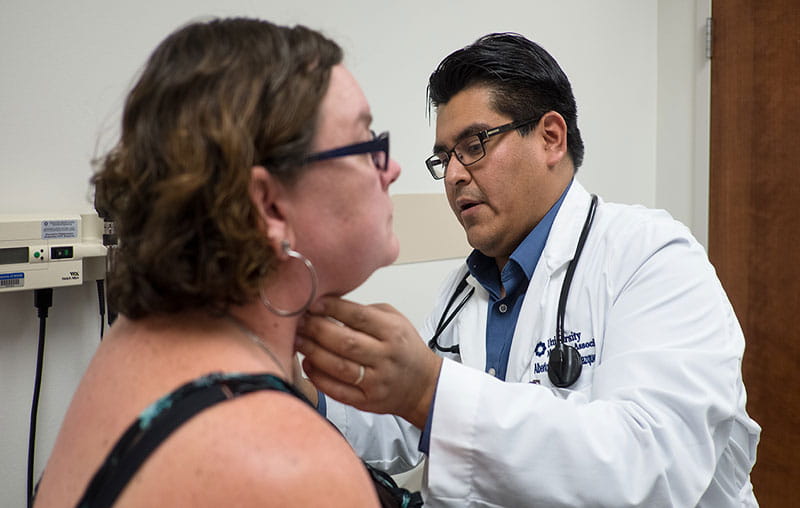Biliary atresia is a rare liver condition that usually presents in a baby 2-4 weeks after birth. If a newborn has biliary atresia, this means their bile ducts are not draining liver juice/bile to the intestine due to scarred bile ducts causing blockage between the liver and the intestine.
Bile is a fluid made by the liver that carries bile acids necessary for digestion and many waste products. If bile gets blocked and backs up into the liver, this can damage the liver. Your child will need surgery as part of their treatment.
Signs & Symptoms of Biliary Atresia
Oftentimes, babies with biliary atresia don’t have any symptoms at birth. You may notice symptoms as early as two weeks after birth, or as late as two months. Symptoms include:
- Yellowish skin and eyes (jaundice)
- Dark urine
- Pale stools
- Swollen belly
- Weight loss
Because these symptoms could indicate other liver conditions, you’ll need to take your child to a pediatrician for evaluation and get referred to pediatric gastroenterologist for management.
How to Diagnose Biliary Atresia
Your child’s health care provider will perform a number of tests to check for biliary atresia and rule out other possibilities. These tests could include:
- Blood work
- Imaging tests
- Liver biopsy
Your child’s health care provider will walk you through each diagnostic test and avoid invasive tests when they can.
Biliary Atresia Treatment Options
Biliary atresia can be fatal if not properly treated. It can cause severe liver damage (cirrhosis) and liver failure.
Your child’s doctor may recommend a surgical procedure called the Kasai procedure, or they’ll recommend a liver transplant.
Kasai Procedure
A Kasai procedure connects the bile drainage from the liver directly to the intestinal tract. It bypasses the blocked bile ducts and can allow a child to grow and be in fairly good health for a few years to adulthood.
If the Kasai procedure is done too late (after 2-3 months of age) or not done, the liver damage progress to scarred liver and liver failure. Your child may need a liver transplant as a lifesaving option.
Liver Transplant
A liver transplant replaces your child’s liver with a whole or partial new liver.
Your child’s health care provider will refer you to a transplant center, where your child will be further evaluated. Your child will be put on the national waiting list. Their spot on the waiting list is determined by how urgently they need a new liver. Your child transplant team will walk you through this process.
Liver transplant is a major surgery, and your child will need to take immune suppressing medications after surgery to reduce their risk of organ rejection. But as they recover, your child will be healthier and happier than ever.
Pediatric Liver Transplant at University Health
If your child needs a liver transplant, there is no better place to do it than University Health Transplant Institute. Our pediatric transplant team is one of the best in the nation, offering specialized transplant options not found anywhere else. Learn more about pediatric liver transplants on our website.




